Categories
- animatronics (12)
- apple (11)
- arduino (179)
- art (41)
- articles (121)
- artificial intelligence (11)
- automation (421)
- avr (205)
- bitcoin (3)
- breadboard (9)
- cameras (57)
- cars (26)
- cell phones (28)
- clothing mods (21)
- console mods (26)
- dangerous (94)
- desktop mods (24)
- embedded (5)
- flying things (54)
- fpga (22)
- gaming creations (108)
- interface (225)
- internet (17)
- laptop mods (6)
- lasers (22)
- linux (7)
- magnetic (3)
- medical (12)
- microcontrollers (51)
- misc projects (152)
- msp (12)
- music (124)
- pic (90)
- projects (23)
- pyroedu (76)
- raspberry pi (26)
- robots (312)
- security (36)
- sensors (307)
- software (200)
- solar (19)
- stamp (9)
- tools (149)
- tutorials (98)
- Uncategorized (45)
- usb (44)
- wireless (256)
Sponsors

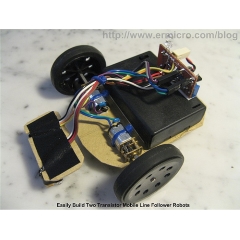
Posted January 12, 2015 by Chris
"The mobile line follower robot is a type of mobile robot with only has one specific task which is to follow the line made with black tape over the white background or vise verse….What makes this LFR is so popular, I think because of its simplicity and yet it could be used as the teaching tools of how we could implement the industrial standard control system such as the PID control system on this robot."
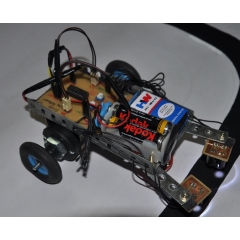
Posted December 21, 2014 by Chris
"Last week I finally got time to do a bit of work. I made my own PCB :). I wish I had learned this back in college. It have would saved me so much time. What PCBs did I make? An improved line follower circuit."
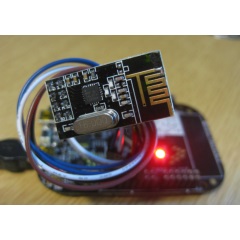
Posted December 14, 2014 by Chris
"For my embedded systems lecture I need a wireless connection to the robot we will develop during that course….Alex Vecchio pointed me to a $2.75 (!) wireless module featuring the Nordic Semiconductor nRF24L01+. Exactly what I needed, with an incredible low price :-). So I ordered a handful modules, and after a few hours, I had two FRDM-KL25Z talking to each other:"
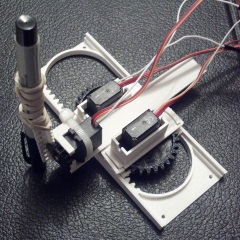
Posted December 1, 2014 by Chris
"The following is my entry of a small 3-axis CNC robotics platform into the African Robotics Network (AFRON) Ultra Affordable Educational Robot 2013 Design Challenge. The Tiny CNC robot, despite its minimal design, is a versatile 3-axis CNC robotics platform which can be customized to perform a variety of useful functions. To demonstrate its versatility, I have augmented it with a pen to serve as a small drawing robot. "
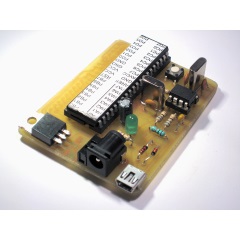
Posted November 25, 2014 by Chris
"Like the Arduino, the USB6 allows you to control robots, make electronic instruments, talk to sensors and interface with the internet. The main difference is that you *buy* an Arduino. You make a USB6. This is good for people who are more interested in the hardware side of things. For example, would you like to learn what capacitors look like? Would you like to try out some board etching techniques, especially alternatives to Ferric Chloride, like Hydrogen Peroxide, etc?"
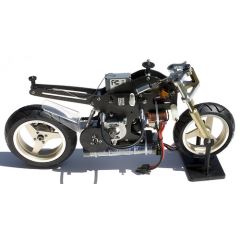
Posted November 7, 2014 by Chris
"This was my first attempt at making a rc bike chassis using carbon fibre was for a Thunder Tiger Electric RC motorbike. The original frame panels were scanned and then traced in Adobe Illustrator. I then modified the layout of the panels to reduce weight and then exported them for cutting on our milling machine."
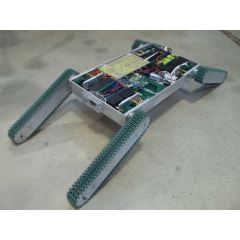
Posted November 6, 2014 by Chris
"The purpose of the prototype was to demonstrate the feasibility of a small, highly maneuverable search and rescue robot. As such, the completed prototype was successful. Capabilities include a ground speed of 10 inches per second, battery life of 50 minutes, wireless range of between 50 and 150 feet, weight of 14.5 pounds and the ability to climb stairs."
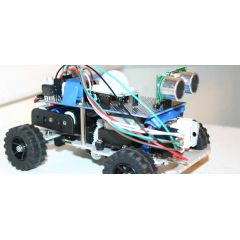
Posted October 19, 2014 by Chris
"For the past weeks I have had this robot to play with. Today I added some additional intelligence to it, and decided to post it here as a finished project…One extra motor was added to the code, I etched a new PCB for the L298 board so it took up less space, and attached it all to a robot chassis."
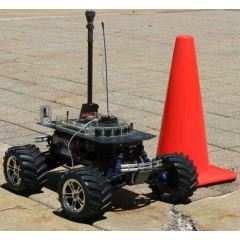
Posted October 14, 2014 by Chris
"Purpose and Goals: during October, 2007, I received an Email from Steve Hassenplug. Steve was trying to get the Chicago robot club (Chibots) to hold an annual RoboMagellan contest. He needed some more entries, so I committed to build a robot for the spring, 2008 competition."
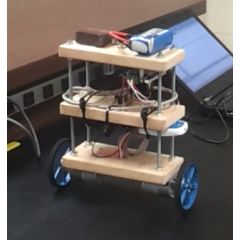
Posted October 5, 2014 by Chris
"An electric unicycle works on the same principles as a Segway but with only one wheel. When it senses that it is falling forward it moves the wheel in that direction to prevent the fall and vice versa for the other direction. Unlike a Segway, lateral balancing is the responsibility of the rider, so the prototype will have two wheels to compensate for this."






